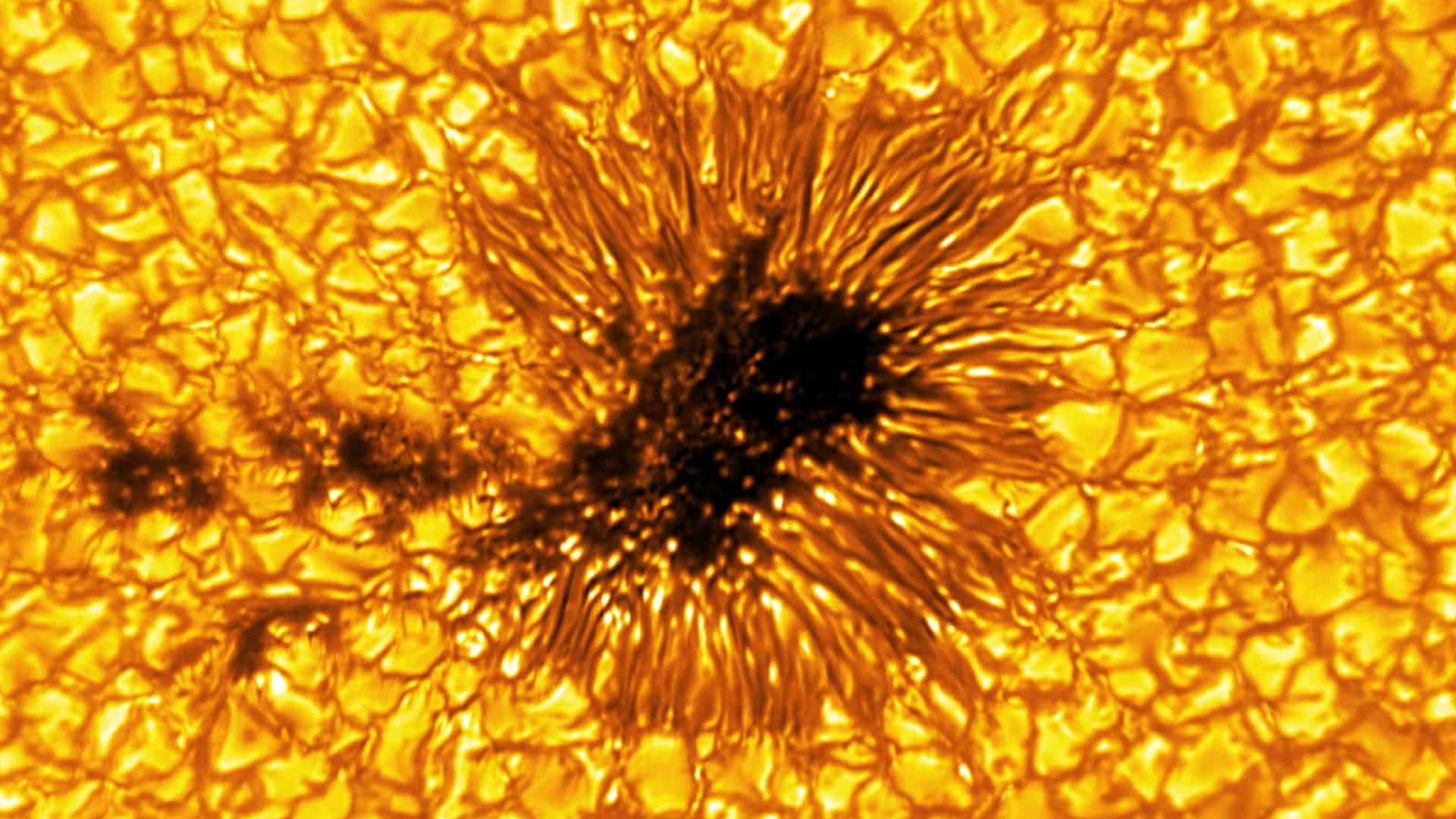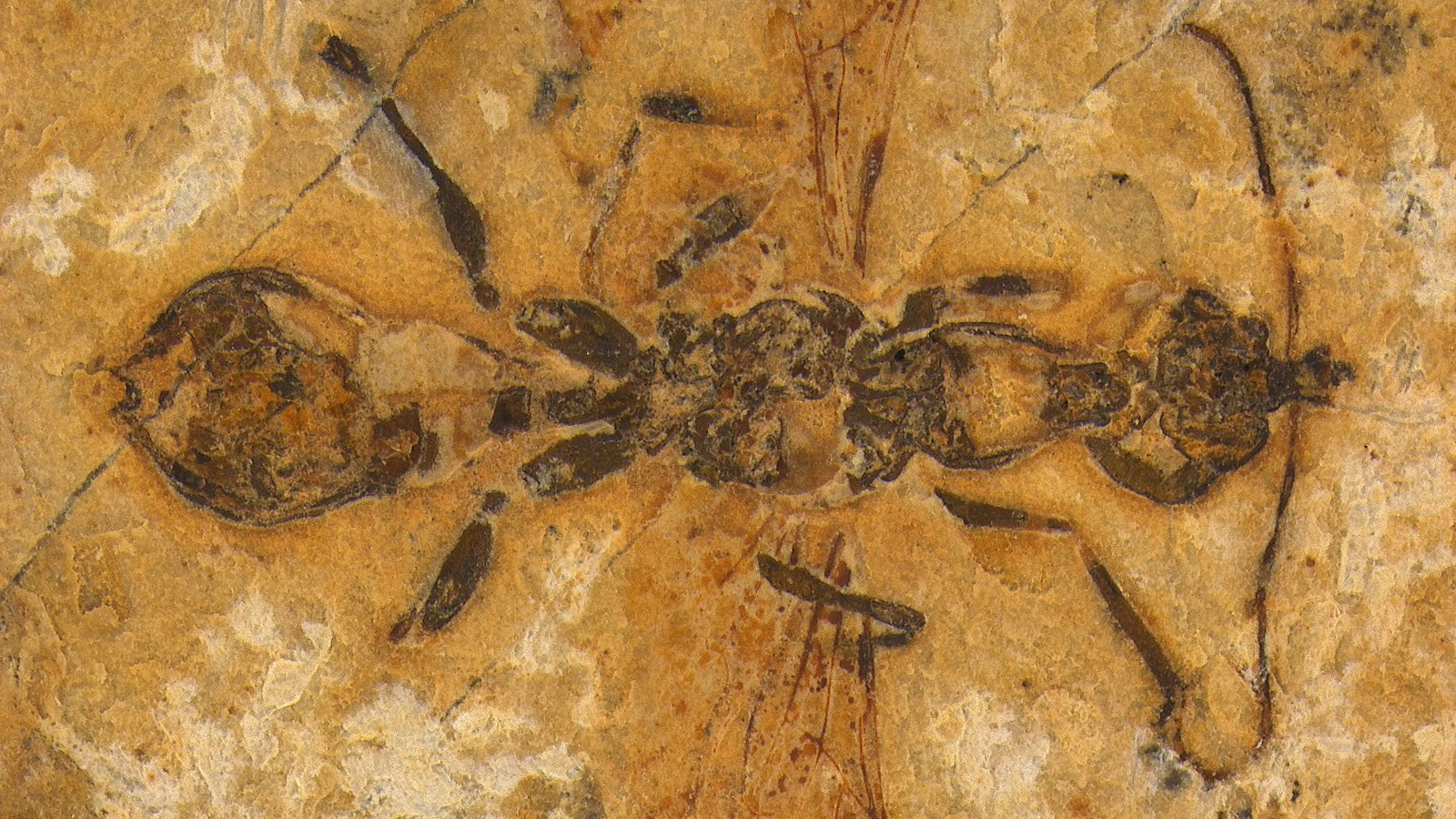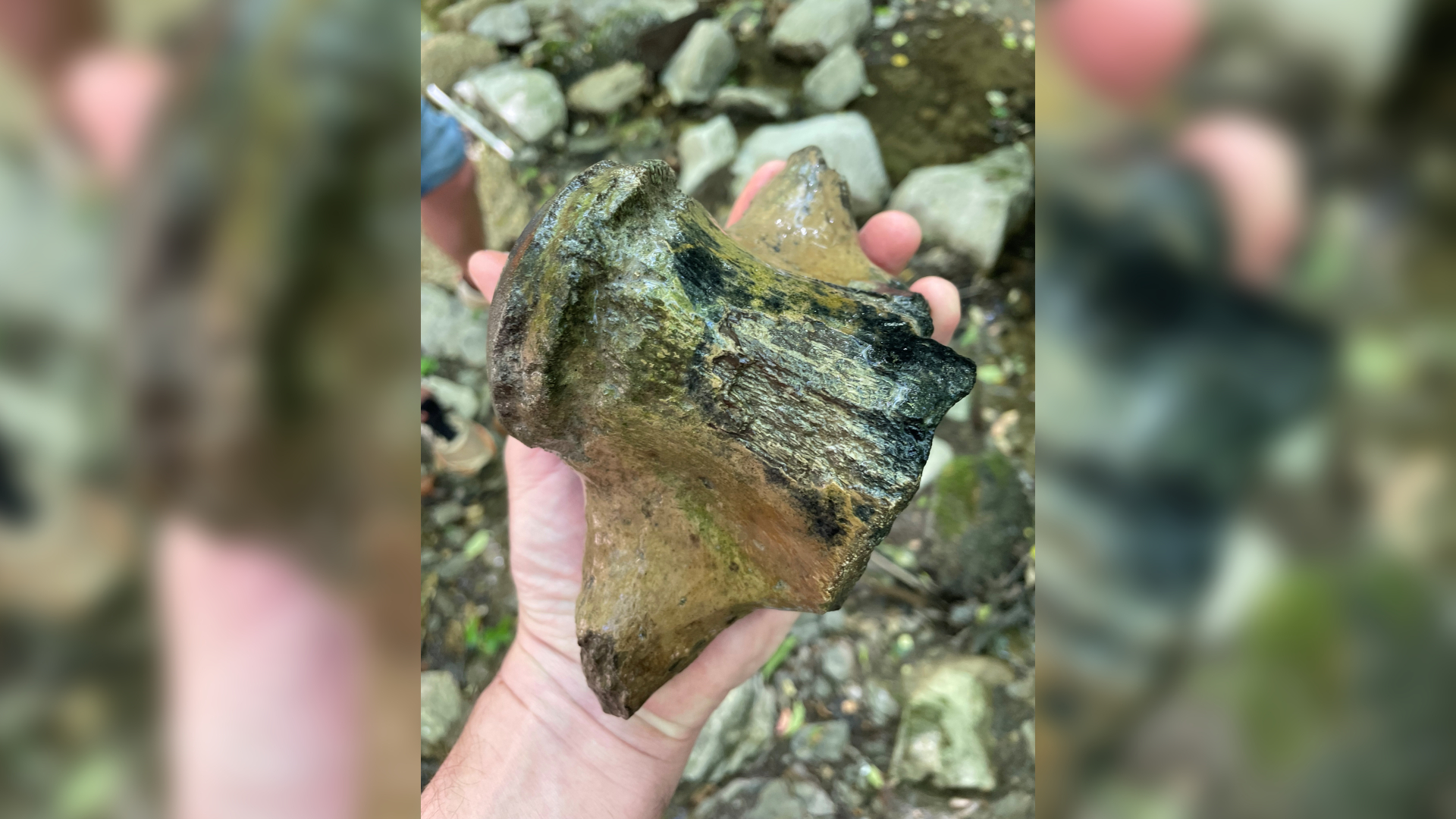15th-century hoard of gold and silver coins discovered in Israel near Sea of Galilee
A coin hoard dating to the 15th century has been discovered near a medieval synagogue in Israel. Why it was deposited there, however, is a mystery.
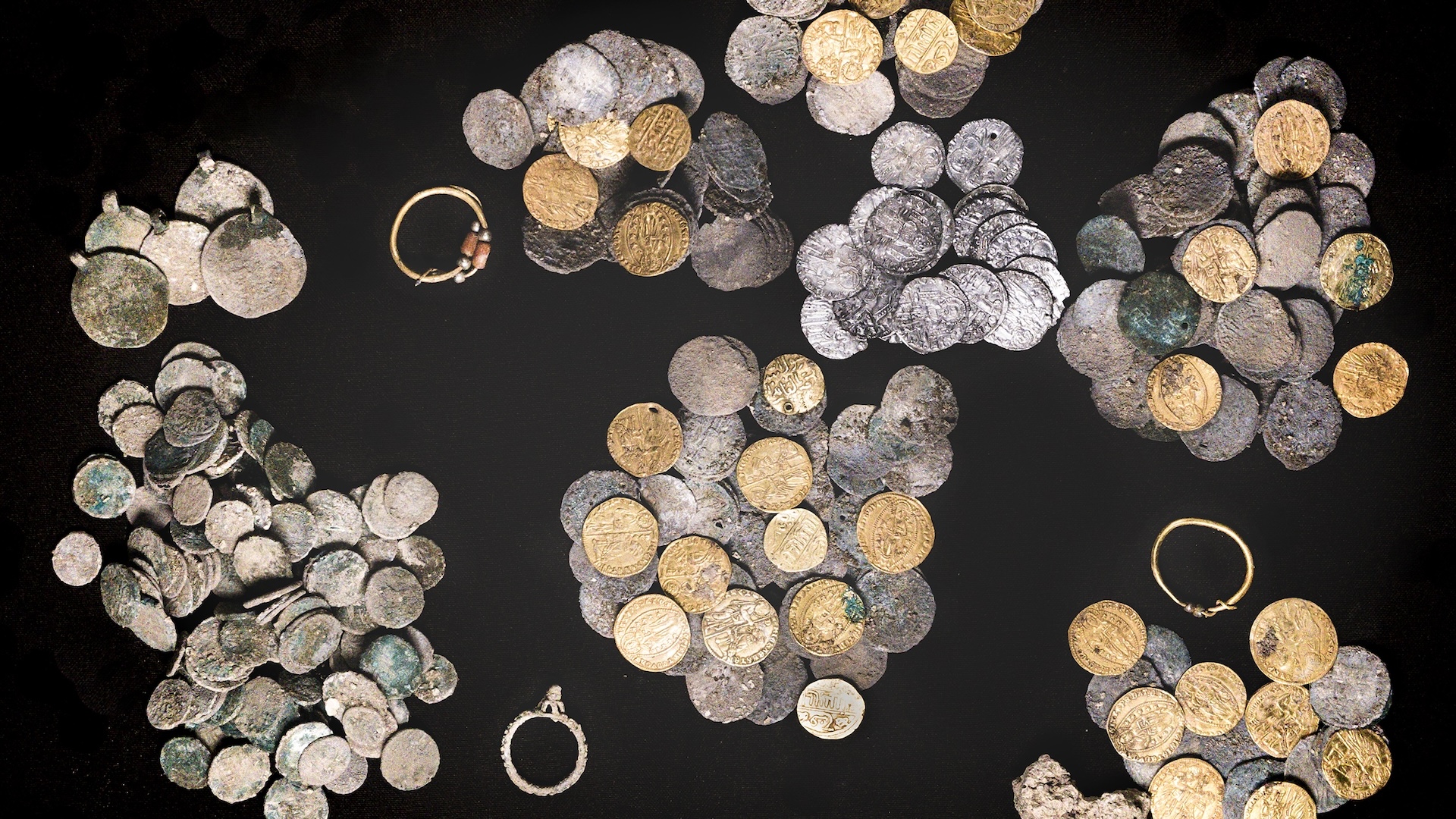
Archaeologists have discovered a hoard of gold and silver coins by the remains of a centuries-old synagogue in Israel, near the Sea of Galilee.
The hoard of 364 coins, which was unearthed at the archaeological site of Huqoq (also spelled Yaquq), dates to the 15th century.
The team found the stash within two jugs under the collapsed wall of the synagogue. Most of the coins are from medieval Venice or the Mamluk sultanate, which controlled the region at the time. It's unclear why the jugs were filled with coins and left at the site, Robert Kool, a curator in the Israel Antiquities Authority's coin department, wrote in a paper published in the latest issue of the American Journal of Numismatics.
The earliest of the Venetian coins dates to the time that Francesco Dandolo was doge (leader of Venice), between 1329 and 1339, while the latest Venetian coins date to the reign of Francesco Foscari, from 1423 to 1457, Kool wrote. Many of the Venetian coins have images depicting St. Mark the Evangelist, who is traditionally ascribed as the author of the Gospel of Mark, as well as Latin inscriptions that can be translated as "It is to You, Christ, that this Duchy is entrusted which You govern," Kool wrote.
During medieval times in the eastern Mediterranean, Venetian coins were widely used as an export currency. "By the end of the fourteenth century [Venetian] ducats were the only European gold currency accepted in Mamluk Egypt and Syria," Kool wrote in the study.
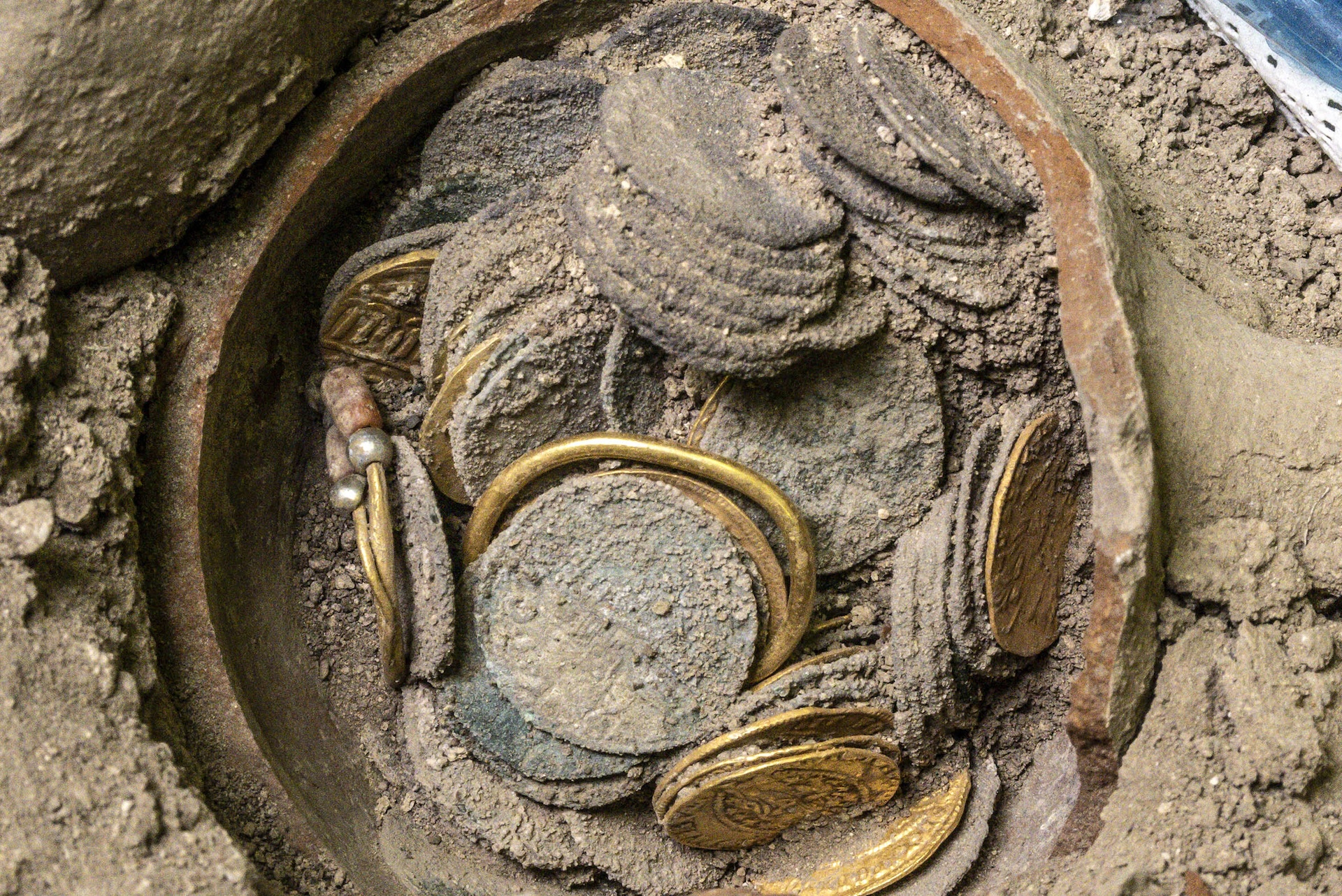
The coin hoard when it was first discovered. Why it was deposited near the medieval synagogue is a mystery.
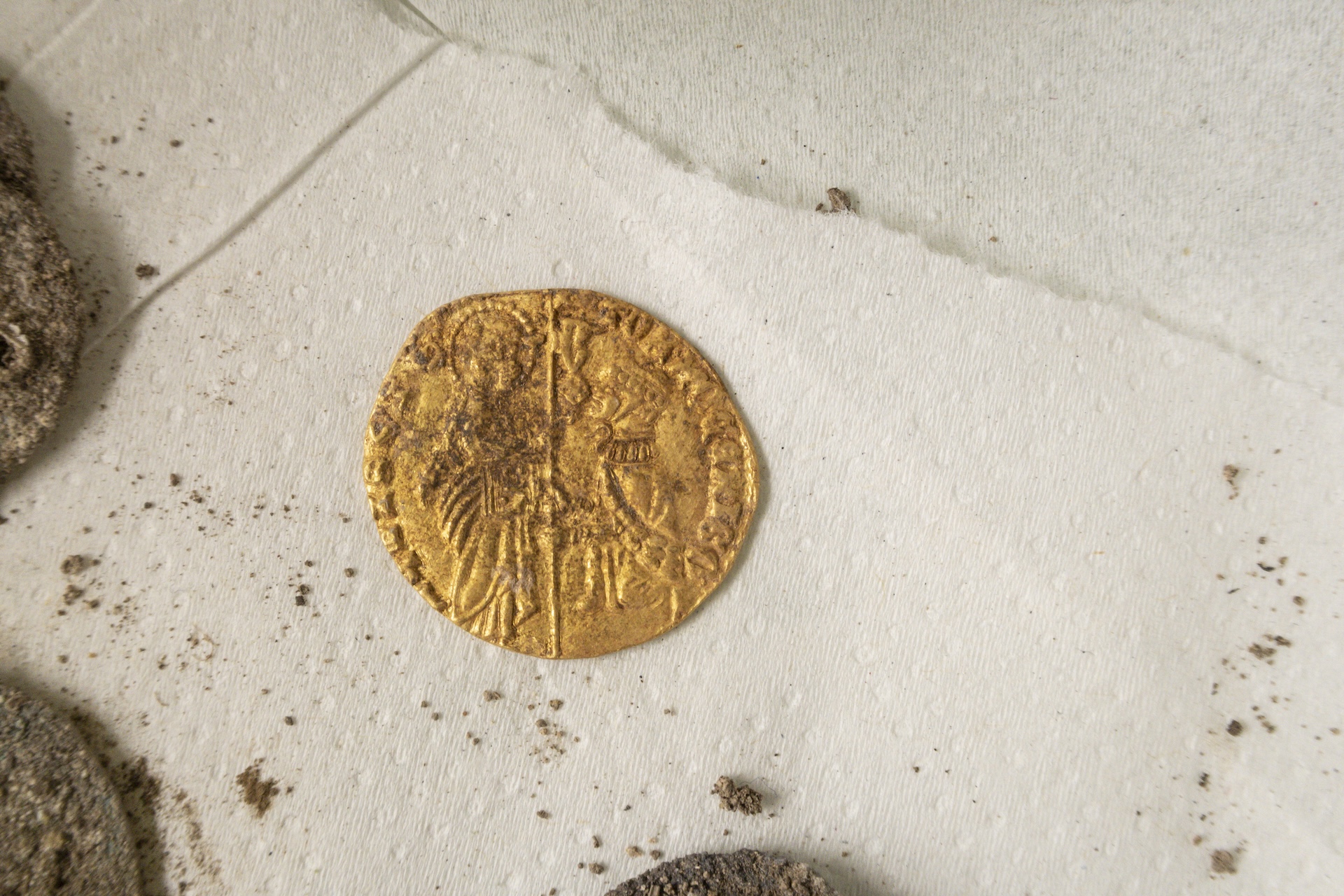
One of the gold coins found at the archaeaological site of Huqoq.
Most of the Mamluk coins in the hoard were minted during the reign of Sultan al-Ashraf Barsbay, from 1422 to 1438, Kool wrote. There are also a few coins from other locations in Southern Europe, such as a silver coin minted during the reign of James I, who was king of Sicily from 1285 to 1295, and even a coin from Serbia.
The "deposition of the hoard occurred sometime during or after 1438-1457," a date range that is based on analysis of the coins and other archaeological remains, Kool wrote in the paper. Who deposited it, where they got the money from, and why it was left at the synagogue are all unknown.
Sign up for the Live Science daily newsletter now
Get the world’s most fascinating discoveries delivered straight to your inbox.
That said, there are many possibilities. It could have been money donated for repairs to the synagogue, or perhaps the hoard was deposited by a traveling merchant who left it there for safekeeping and never came back, Kool wrote. Yet another possibility is that the coins were left by pilgrims traveling to the tomb of Habakkuk, a prophet mentioned in the Hebrew Bible who lived in the seventh century B.C.This tomb is located near Huqoq.
The building stopped being used as a synagogue in the mid-15th century, Kool noted. After that, the building fell into ruin.
The hoard was found in the summer of 2018, but its discovery was not announced publicly at the time because of concerns about looting, Jodi Magness, a professor of religious studies at the University of North Carolina at Chapel Hill who led the team that made the discovery but wasn't an author of the new study, told Live Science via email.

Owen Jarus is a regular contributor to Live Science who writes about archaeology and humans' past. He has also written for The Independent (UK), The Canadian Press (CP) and The Associated Press (AP), among others. Owen has a bachelor of arts degree from the University of Toronto and a journalism degree from Ryerson University.

